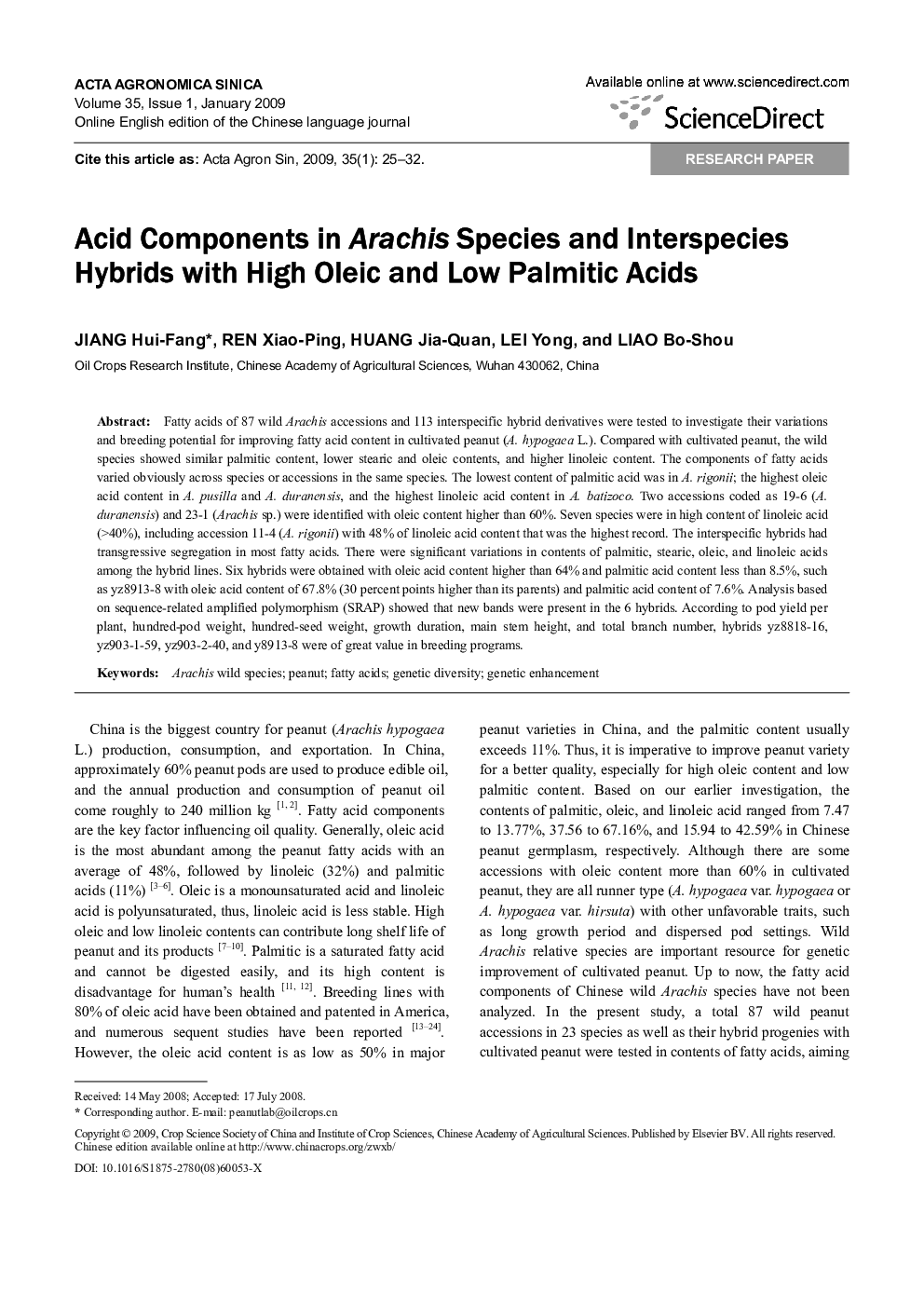| Article ID | Journal | Published Year | Pages | File Type |
|---|---|---|---|---|
| 4503385 | Acta Agronomica Sinica | 2009 | 8 Pages |
Fatty acids of 87 wild Arachis accessions and 113 interspecific hybrid derivatives were tested to investigate their variations and breeding potential for improving fatty acid content in cultivated peanut (A. hypogaea L.). Compared with cultivated peanut, the wild species showed similar palmitic content, lower stearic and oleic contents, and higher linoleic content. The components of fatty acids varied obviously across species or accessions in the same species. The lowest content of palmitic acid was in A. rigonii; the highest oleic acid content in A. pusilla and A. duranensis, and the highest linoleic acid content in A. batizoco. Two accessions coded as 19-6 (A. duranensis) and 23-1 (Arachis sp.) were identified with oleic content higher than 60%. Seven species were in high content of linoleic acid (>40%), including accession 11-4 (A. rigonii) with 48% of linoleic acid content that was the highest record. The interspecific hybrids had transgressive segregation in most fatty acids. There were significant variations in contents of palmitic, stearic, oleic, and linoleic acids among the hybrid lines. Six hybrids were obtained with oleic acid content higher than 64% and palmitic acid content less than 8.5%, such as yz8913-8 with oleic acid content of 67.8% (30 percent points higher than its parents) and palmitic acid content of 7.6%. Analysis based on sequence-related amplified polymorphism (SRAP) showed that new bands were present in the 6 hybrids. According to pod yield per plant, hundred-pod weight, hundred-seed weight, growth duration, main stem height, and total branch number, hybrids yz8818-16, yz903-1-59, yz903-2-40, and y8913-8 were of great value in breeding programs.
